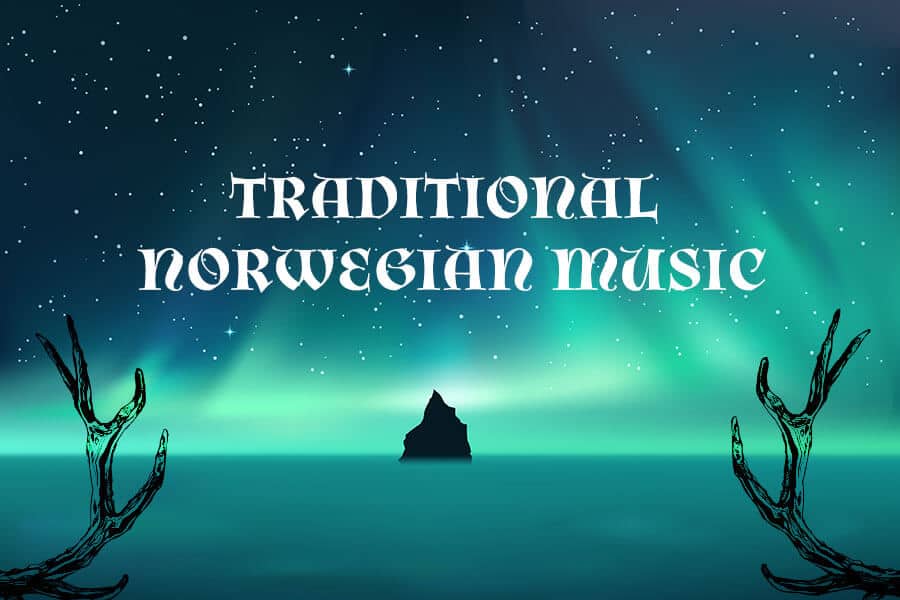In a world full of a variety of cultural music entities, some fade back into the darkness while others remain vigilant and bright. From the snowy hills and chilly nights, to the beautiful array of colors seen through the Northern Lights, Norwegian music remains a mystery in the core of heavy tradition and culture.
Sometimes, I am surprised at the number of things I do not know musically. Now granted, I was the eager boy wanting to jump on the colorfully lighted stage, but I have no idea of what music was being created on the other side of the globe. Growing up with American lenses, it was easy to not be accessible to other global implications. However, music allows one to clean those glasses with less ignorance and open minds to view cultural music as a chance to learn about many places around the world!
As my best friend and I gossiped our way through another hour-long phone date, I was slightly reminded of a very important question to ask her. With a Norwegian background, her expression is of a beautiful Norwegian nature. Growing up in California, she was always fascinated in her Norwegian culture, and explored the icy mountains back and forth through our adolescence. But as music brings people together, music always was a focal point of our relationship.
We bonded over our Hannah Montana days and reminisce about our vocal a capella school days. But as we were mid conversation about food and social gathering dos and don’ts I interrupted with an ignorant, “Bella, what is traditional Norwegian Music?” She paused. I assumed her answer would be very specific, but the words began to pour out of her. “I don’t really know. It is not too much of a thing in some aspects. There is tradition indeed, but musically not so complex.” Her answer puzzled me. I began to think about the Disney sounds of “Frozen” and how I could not just “Let It Go”. It made a global impact and shed a fun light on Norwegian culture. However, maybe she was right. Studying a huge part of my high school curriculum, Norwegian music was never a topic. Never discussed. Could there truly be a lack of Norwegian representation in music today, and does it influence the Norwegian music of today?
Music of the Snowy Mountains
With a strong Christian influence, Norway’s traditional music developed before 1840. Norwegian music developed in to fairy tale and fantasy connections as the folk music of Norway centered around entertainment and dancing. Norwegian folk music has two very distinct entities that the music embodies: vocal and dance. Bygadeand (traditional Norwegian folk dances) were incorporated with couple routines as Norwegian culture highlighted characteristics of ceremonial dances with a mix of other cultures. Three beat dances and two beat dances spark the Norwegian dance melody. These courting dances were mainly connected to farm life, funerals, and festive seasons such as Christmas. But dance continued to show its valuable presence for Norway.
North Germanic and Sami are the main categories of traditional Norwegian music.
Sami music is centered around the vocal stylings of Joik. This vocal interpretation revolves around chanting, symbolizing the Native American and its indigenous community.
Listen to Sami Music Now!
North Germanic surrounds the vocal styling of kvad. This ballad and improvised structure are one of the most common of the traditional music forms. Hymns, work songs mixed with sensational trailing vocals are some of the reasons why the genre of folk music is popularized. Heilung (a Norwegian traditional group) incorporates the historical sound in today’s modern time.
Listen to Heilung Now!
Stop the Party! Serious Question
Although it had many variations of traditional music, the Norwegian culture captivated medieval ballads. With the inspiration of the middle age, the traditional Norwegian Hardinger fiddle showed a prominent presence. The fiddle made its modern appearance from Annbjorg Lien in her first 1989 album “Annbjorg”. However, other Norwegian instruments have made a prominent statement in the world of traditional folk music. The goat horn bukkehorn, the chorded zither harpeleik, and lur which was a similar trumpet instrument.
As I called my homegirl for another friendly phone date, I was bombarded by the crazy sounds of a Norwegian gathering. This fun filled night of singing and dancing is a necessity for my friends in Oslo, Norway. I was on a mission. I proceeded to ask Bella what the room of young Norwegians felt about traditional Norway folk music. Bella took an intriguing pause. “Everyone!” she began with a boisterous voice as the room quieted down in a rapid halt. “Does anyone in this room have an opinion on Norwegian folk music or even know about Historical Norway music?” Laughter filled the room followed by a complete astounding “No!” The room of 20 young adults of Norwegian descent were unaware of their historical musical background! But could we blame them? It seemed the pop culture began to polarize within the Norwegian younger community, creating their own brand of Norwegian music.
Collectively Norway has begun expanding its musical horizons to the world of techno and Hip Hop. Black metal is an extreme sub offspring of heavy metal. With a mixture of fast tempo and shrieking vocal styles, Norwegians have found their cultural voice through popularizing this metal entity. The metal subgenre however, shows similarity with certain parts of historical Norwegian music implementation. And though the Norwegian traditional music scene is not as seen on the global stage, Norway continues to appreciate the eclectic sounds of its folk music. Artists such as Gate and Odd Nordstoga make influential waves on the recent generation. NRK (Norwegian Broadcasting Corporation) continues to captivate the folk style with 50,000 recordings from the 1930s until today. From the one selective viewpoint, we could conclude that music can become traditional in its own right through the progress of musical national taste. Unlike other cultures that embody the roots of music into modern implications.
Photo: Shutterstock / Photomontage: Martina Advaney
Read more reviews from the author.
Support us!
All your donations will be used to pay the magazine’s journalists and to support the ongoing costs of maintaining the site.
Share this post
Interested in co-operating with us?
We are open to co-operation from writers and businesses alike. You can reach us on our email at cooperations@youthtimemag.com/magazine@youthtimemag.com and we will get back to you as quick as we can.










